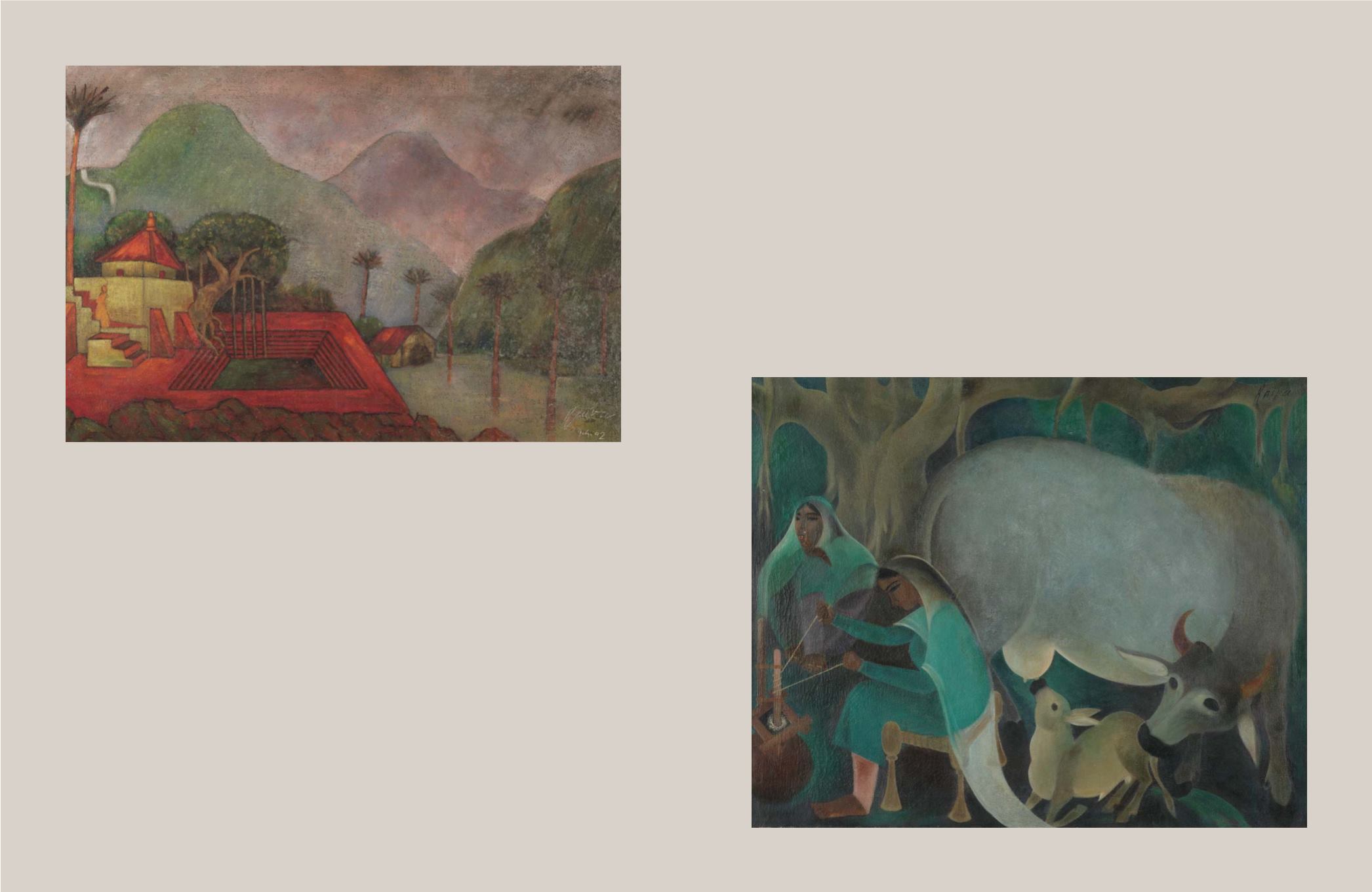

122
123
S
cenes of a rustic village life are beautifully
detailed in lots 84 and 86. Raiba’s calligraphic
skills translate seamlessly into contours to define
forms and create movement. The gentle bends of boughs
are mirrored in the garments draped around the women,
creating rhythm. Raiba’s study of miniatures is evident as
he spares no effort in detailing facial expressions as well
as foliage, bringing the paintings to life.
84
A A RAIBA
(1922 ‒ 2016)
Untitled
Signed 'RAiba' (upper right)
Oil on canvas
26 x 32.25 in (65.8 x 81.9 cm)
$ 9,375 ‒ 12,500
Rs 6,00,000 ‒ 8,00,000
EXHIBITED:
A. A. Raiba: The Indian Master Painter,
Mumbai: Nehru Centre
Art Gallery, 15 December 2016 ‒ 1 January 2017
PUBLISHED:
A. A. Raiba: The Indian Master Painter,
Mumbai: Nehru Centre,
2016 (illustrated, unpaginated)
L
ike many of India’s leading modernists, Raiba
found amentor in art criticWalter Langhammer,
who advised him to explore India in order to
discover his own pictorial language. Raiba travelled across
the country, finding inspiration in both architecture and
nature. He used jute as a support for some paintings,
and the medium lent itself well to achieving a coarse,
textured quality, as seen in the present lot.
83
A A RAIBA
(1922 ‒ 2016)
Untitled
Signed and dated 'Raiba 9.4.92' (lower right)
1992
Oil on jute pasted on hardboard
17.75 x 25.25 in (45 x 64 cm)
$ 6,250 ‒ 9,375
Rs 4,00,000 ‒ 6,00,000
EXHIBITED:
A. A. Raiba: The Indian Master Painter,
Mumbai: Nehru
Centre Art Gallery, 15 December 2016 ‒ 1 January 2017
PUBLISHED:
A. A. Raiba: The Indian Master Painter,
Mumbai: Nehru
Centre, 2016 (illustrated, unpaginated)


















